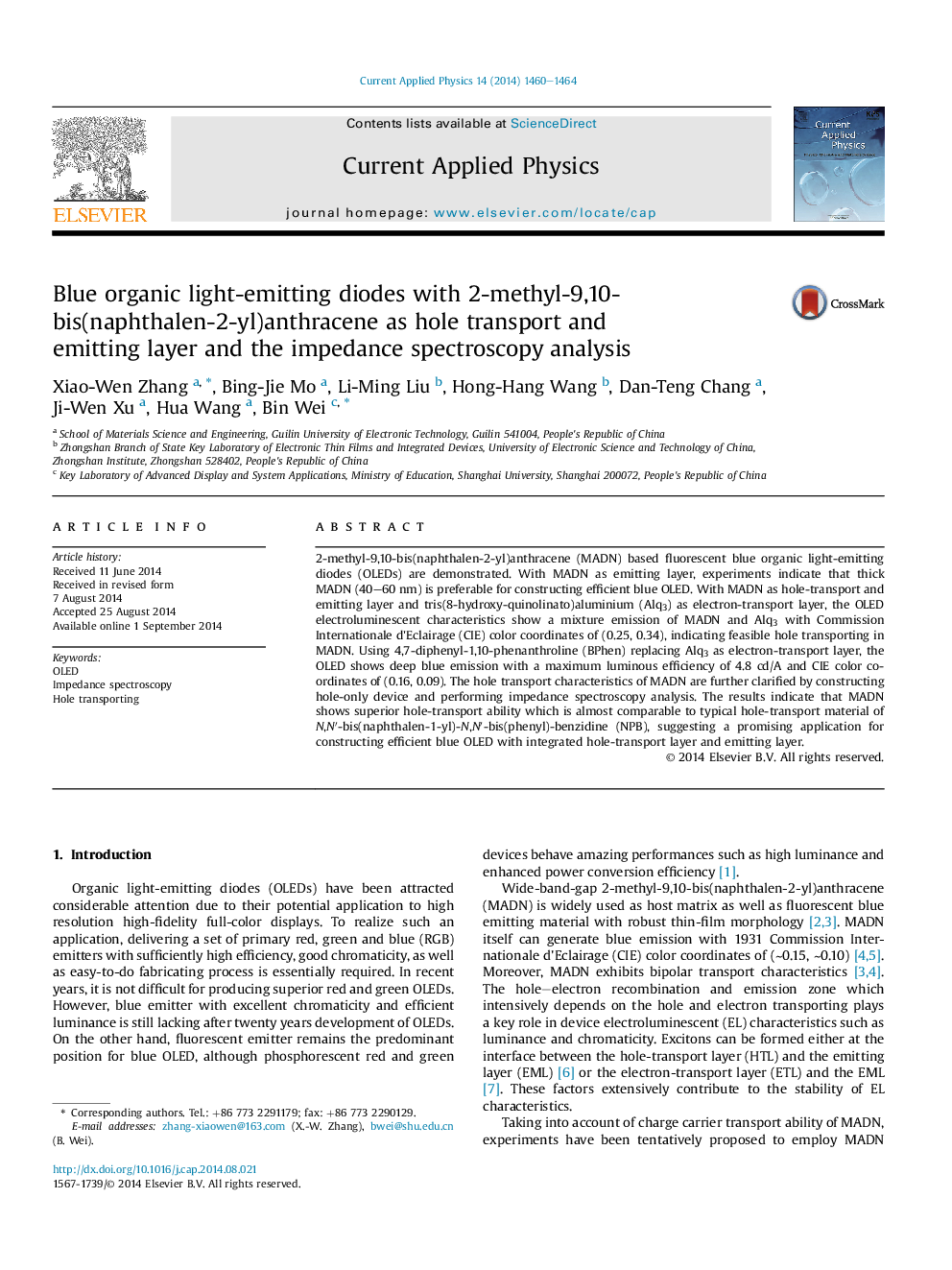| Article ID | Journal | Published Year | Pages | File Type |
|---|---|---|---|---|
| 1786297 | Current Applied Physics | 2014 | 5 Pages |
•40–60 nm thick MADN is preferable for obtaining efficient blue OLED.•Blue OLED with MADN as hole transport and emitting layer is demonstrated.•MADN shows comparable hole transporting characteristics as NPB.
2-methyl-9,10-bis(naphthalen-2-yl)anthracene (MADN) based fluorescent blue organic light-emitting diodes (OLEDs) are demonstrated. With MADN as emitting layer, experiments indicate that thick MADN (40–60 nm) is preferable for constructing efficient blue OLED. With MADN as hole-transport and emitting layer and tris(8-hydroxy-quinolinato)aluminium (Alq3) as electron-transport layer, the OLED electroluminescent characteristics show a mixture emission of MADN and Alq3 with Commission Internationale d'Eclairage (CIE) color coordinates of (0.25, 0.34), indicating feasible hole transporting in MADN. Using 4,7-diphenyl-1,10-phenanthroline (BPhen) replacing Alq3 as electron-transport layer, the OLED shows deep blue emission with a maximum luminous efficiency of 4.8 cd/A and CIE color coordinates of (0.16, 0.09). The hole transport characteristics of MADN are further clarified by constructing hole-only device and performing impedance spectroscopy analysis. The results indicate that MADN shows superior hole-transport ability which is almost comparable to typical hole-transport material of N,N′-bis(naphthalen-1-yl)-N,N′-bis(phenyl)-benzidine (NPB), suggesting a promising application for constructing efficient blue OLED with integrated hole-transport layer and emitting layer.
